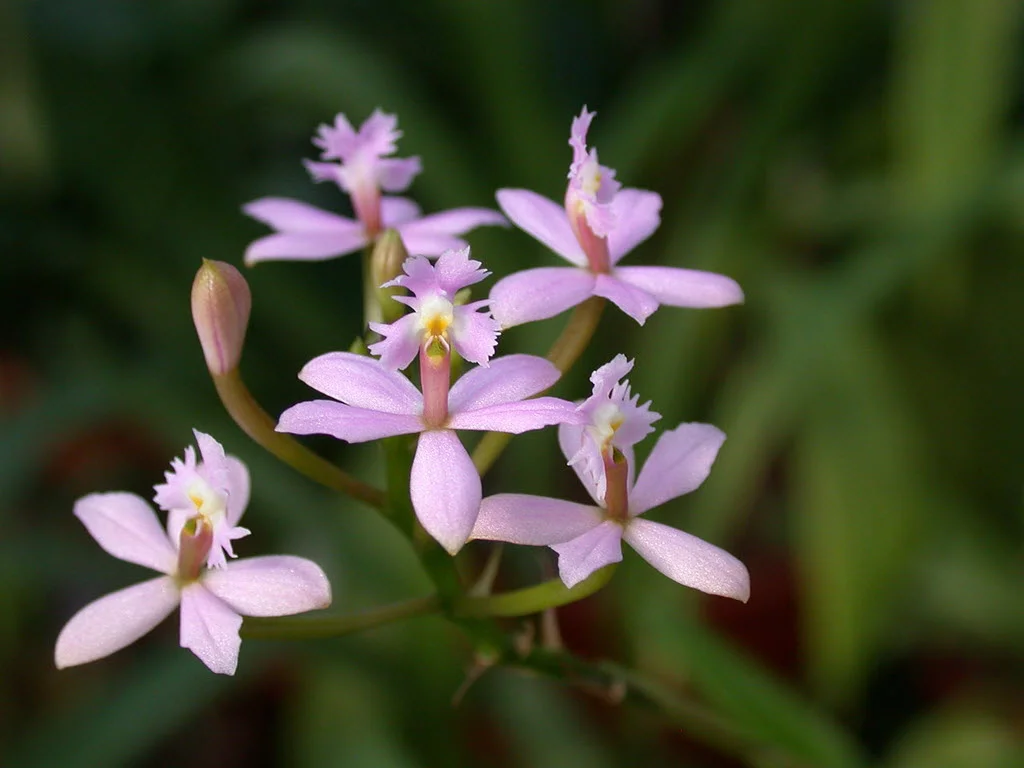Table of Contents
Pronunciation: mex-ih-PEE-dee-um
Introduction
The Mexipedium genus is relatively new in the orchid world; it was first discovered in 1991. To date, this genus only contains a single species of orchid, and is native to Mexico.
Mexipedium xerophyticum
What makes this orchid unique is the fact that it tends to grow along rocky surfaces, loves sunlight, and it tends to creep and take over areas that it's planted in. It has very small bright white flowers that have a blush hue, and the leaves are small, stiff, and spread out among the runners.
Temperature
As this orchid is native to Mexico, it likes slightly hotter temperatures during the daytime and cooler nighttime temperatures. To ensure that your orchid grows well and stays happy, keep your daytime temperatures between 80°F to 85°F (27°C to 29°C).
Nighttime temperatures can drop down to a range between 70°F and 75°F (21°C to 24°C). Mexipediums also like a temperature shift between the summer and winter months as well that mirror the daytime and nighttime temperatures.
Light
If you're growing this orchid from seed, they need low light until you see growth starting. Once this starts, you can gradually increase the light levels to bright, partially shaded light. Ideally, you want your orchid to get the bright morning sunlight and avoid the hotter afternoon sun.
This orchid does well in bright east-facing windows or shaded west-facing windows. If it is gets too much sun, the leaves are prone to sunburn. You can add netting to help break up the sunlight and protect the leaves.
Water and Humidity
Unlike many orchids, the Mexipedium likes to grow in drier conditions. In its natural habitat, it grows on rocks and cliff faces, so it's never soaked. The roots should be kept moist, but too much water will allow for root rot. This can kill your orchid if you don't fix it fast.
Your watering schedule will depend on your light, temperature, and humidity levels, but a good rule of thumb is to water every two or three days as you see it starting to get dry. Water them until you see water running out of the bottom of the pot. If they seem too damp, skip watering them a day. The humidity levels should be around 40 to 50%.
Feeding
You want clean water for this orchid, but it also likes high calcium and mineral deposits. Look for a fertilizer with a 20-10-20 mix or one with high calcium content. Fertilize your plant once a week during the spring and summer months, and cut back on your fertilizing to once every two to three weeks during the winter.
Also, before you fertilize your orchid, make sure that you water it. Never apply your fertilizer to dry roots as this can burn them and cause a lot of damage. Dilute your fertilizer mix by adding a teaspoon of fertilizer to a gallon of water.
Potting
As this orchid tends to creep and spread out, put them in long shallow pans so they have room to grow. Your potting medium should be a mix of sphagnum moss, lava rock, soil, and coconut husks. This will ensure that it's light enough to allow for good airflow, but it'll retain a small amount of water to sustain it between watering.
You can repot your orchid every two or three years to refresh the growing medium, and it's best to do this in the spring.
More Beautiful Orchids For Your Collection










